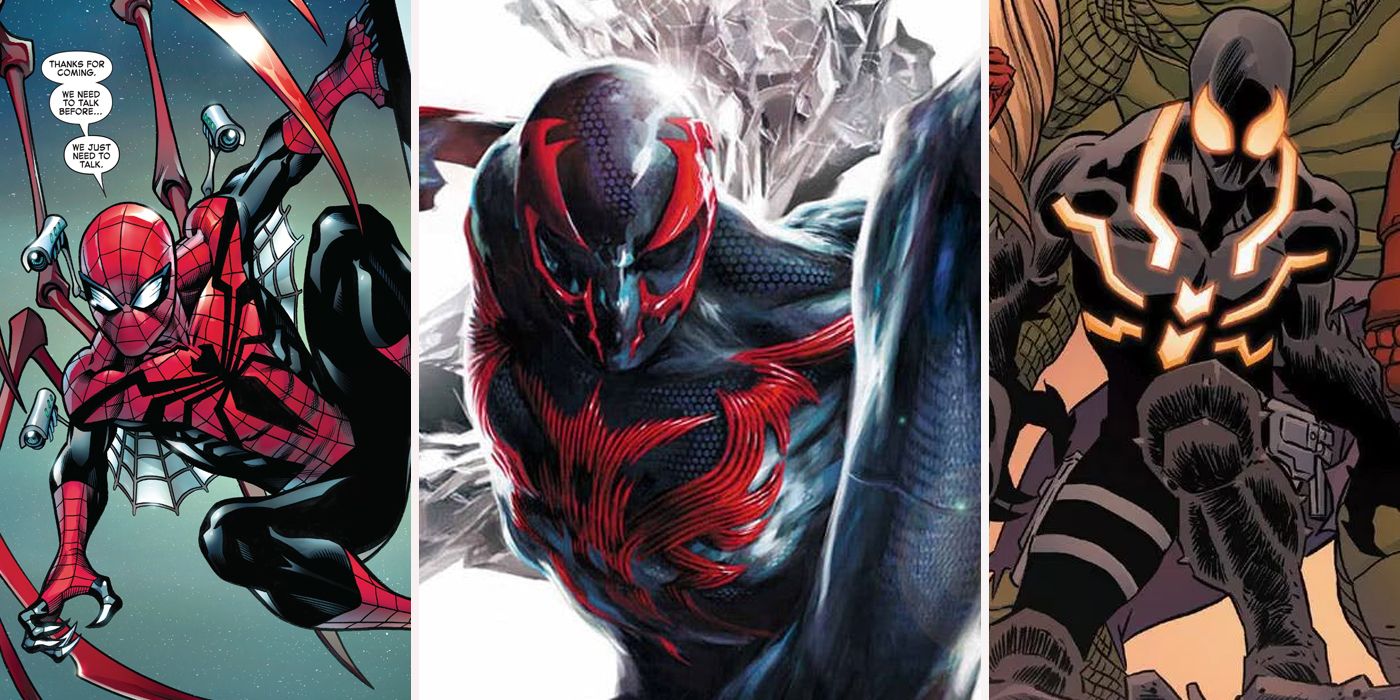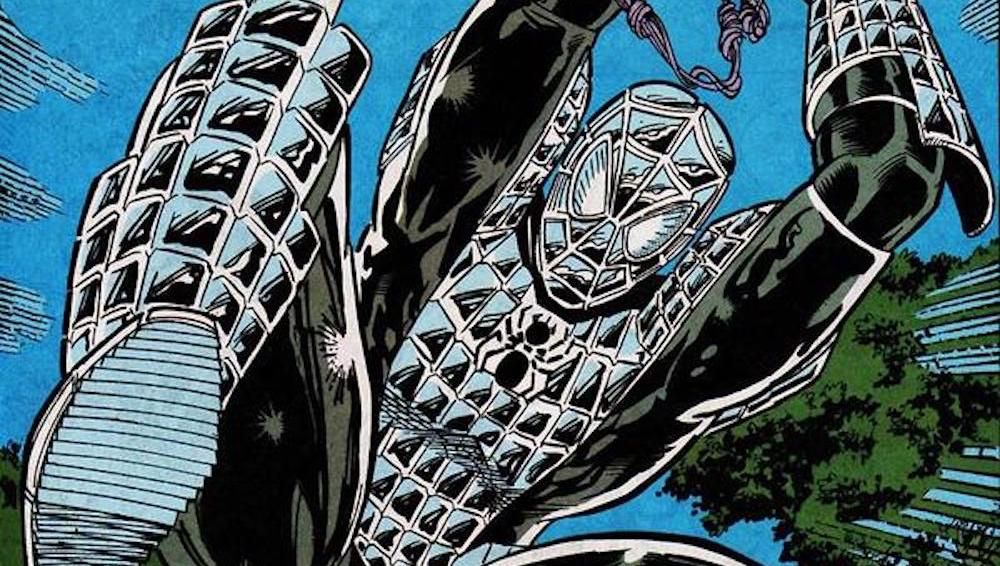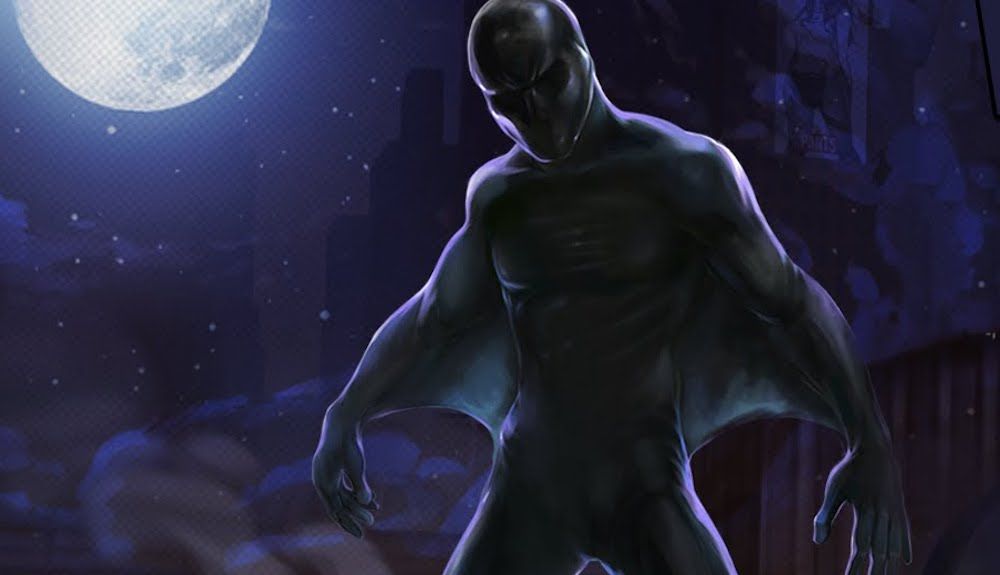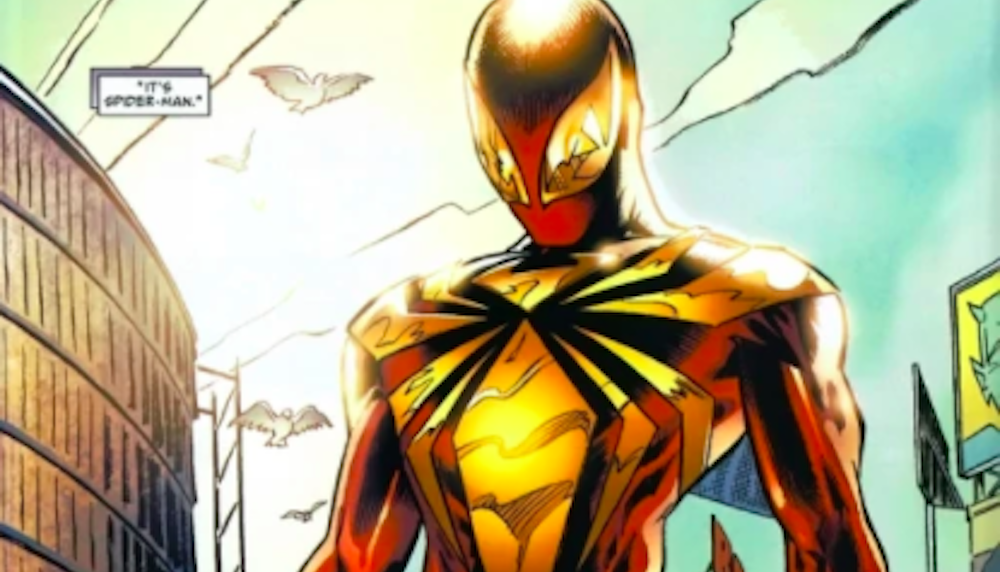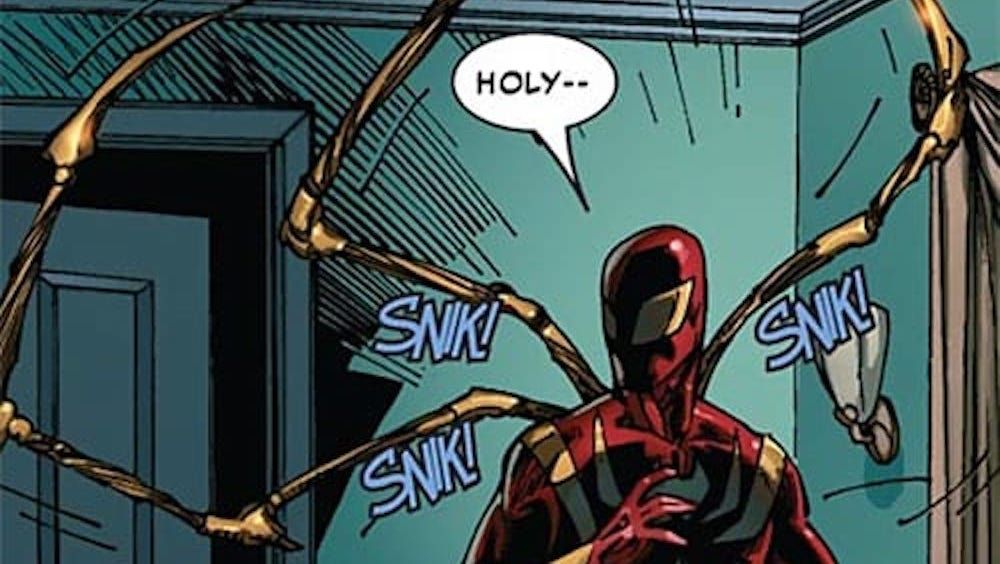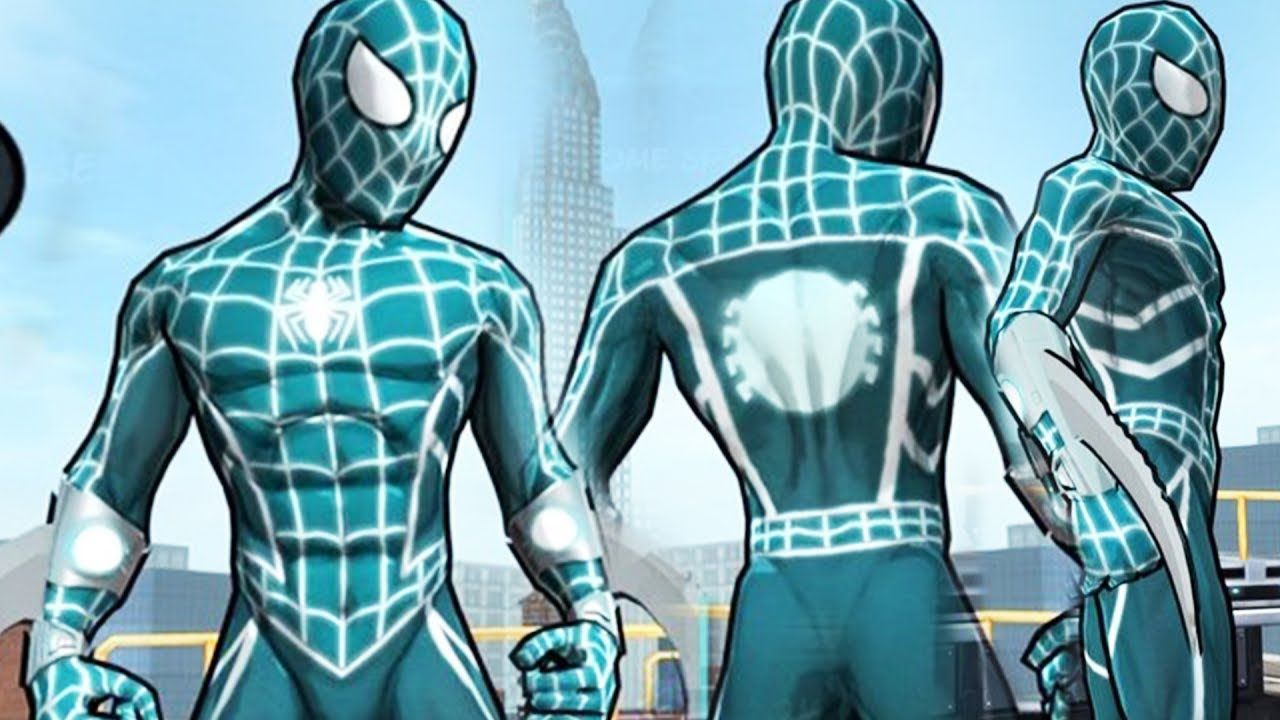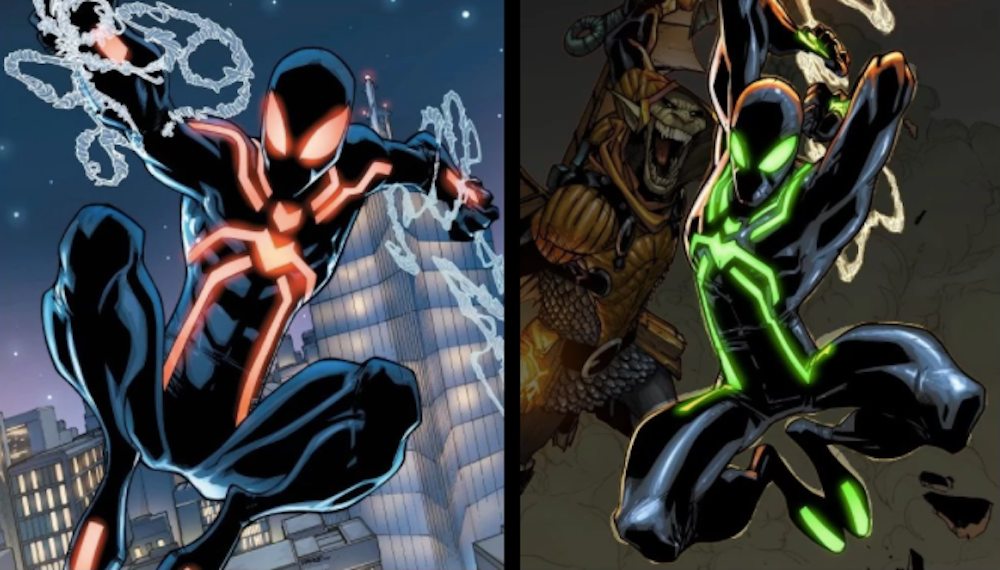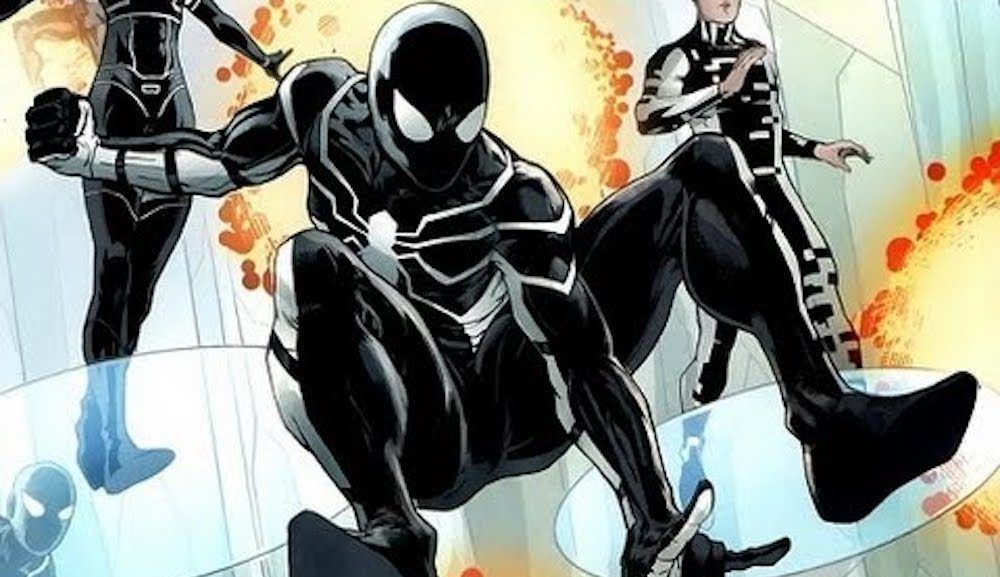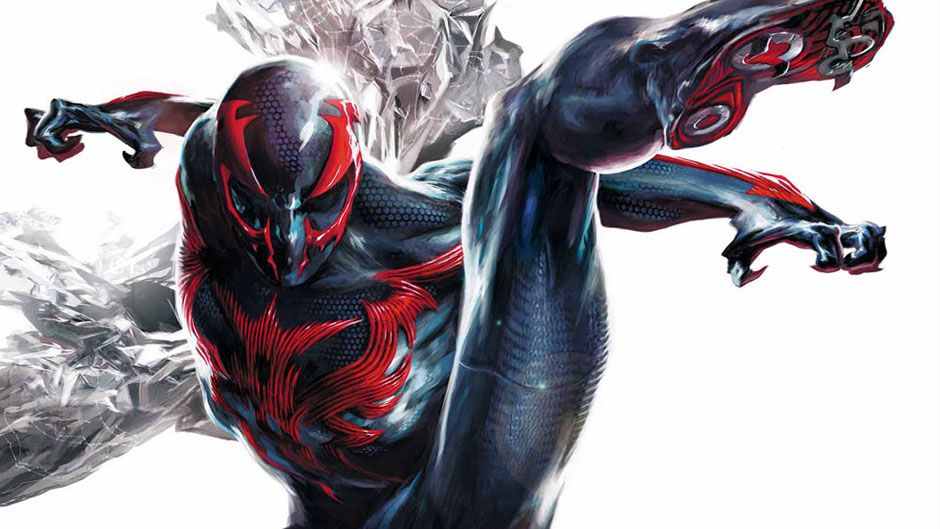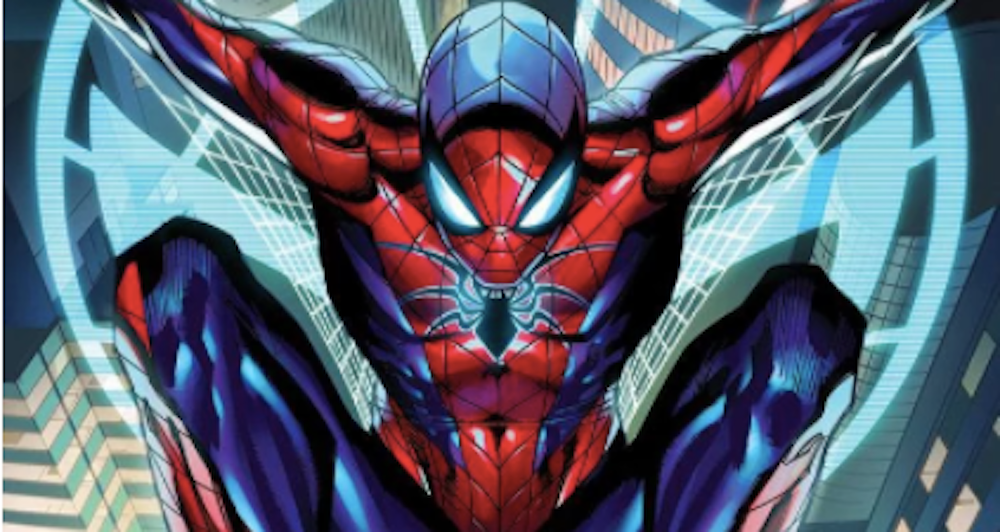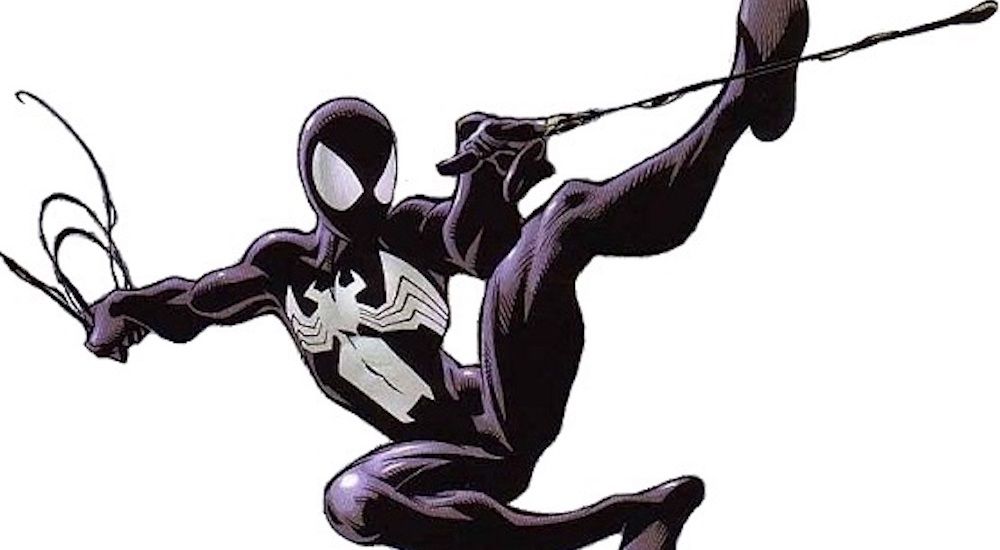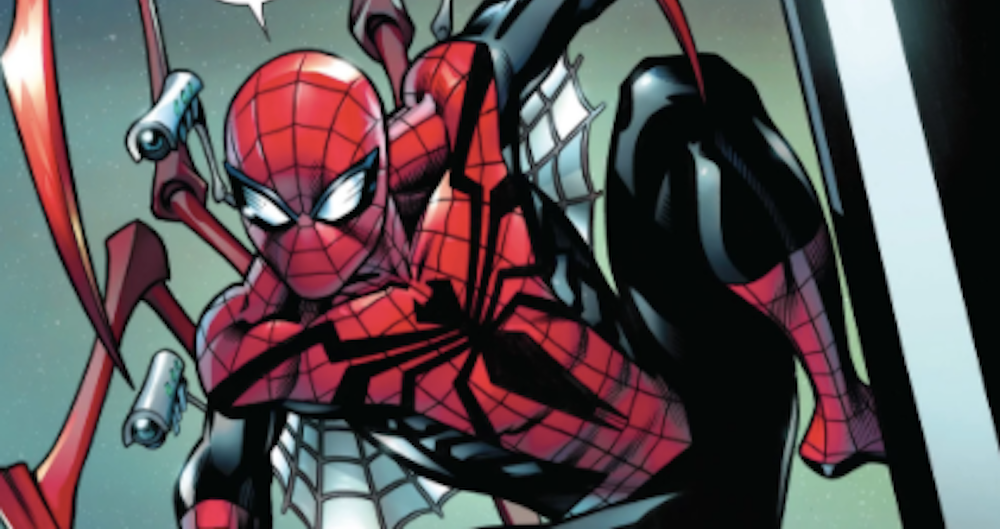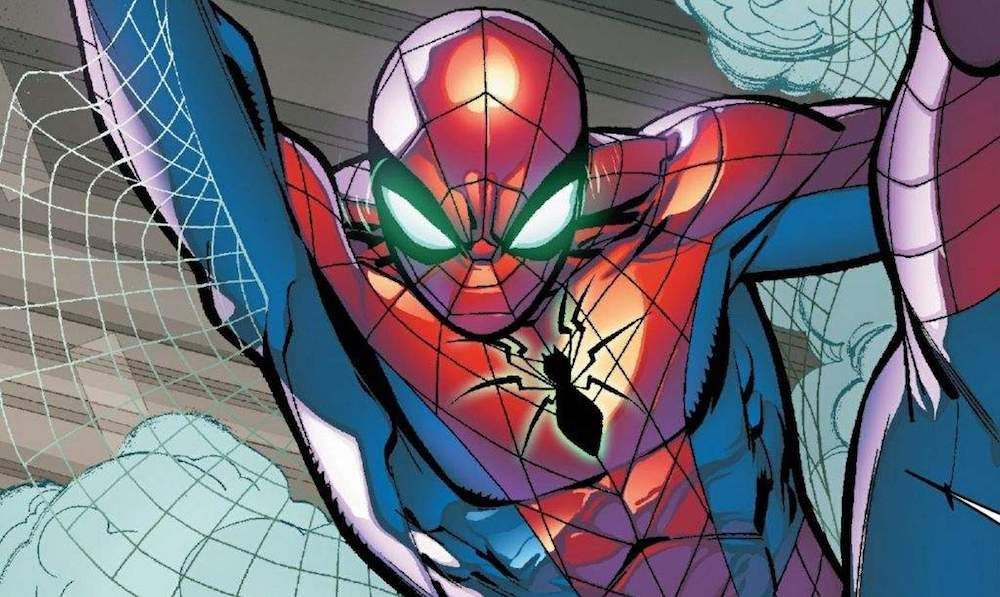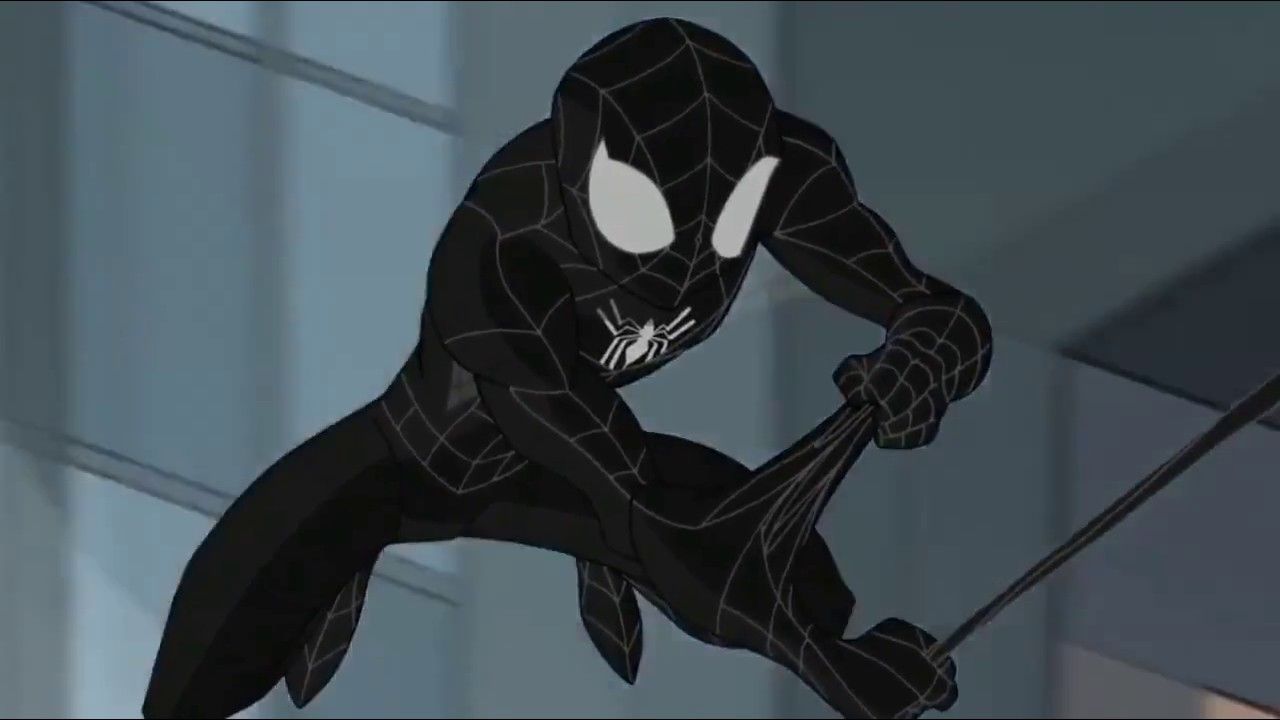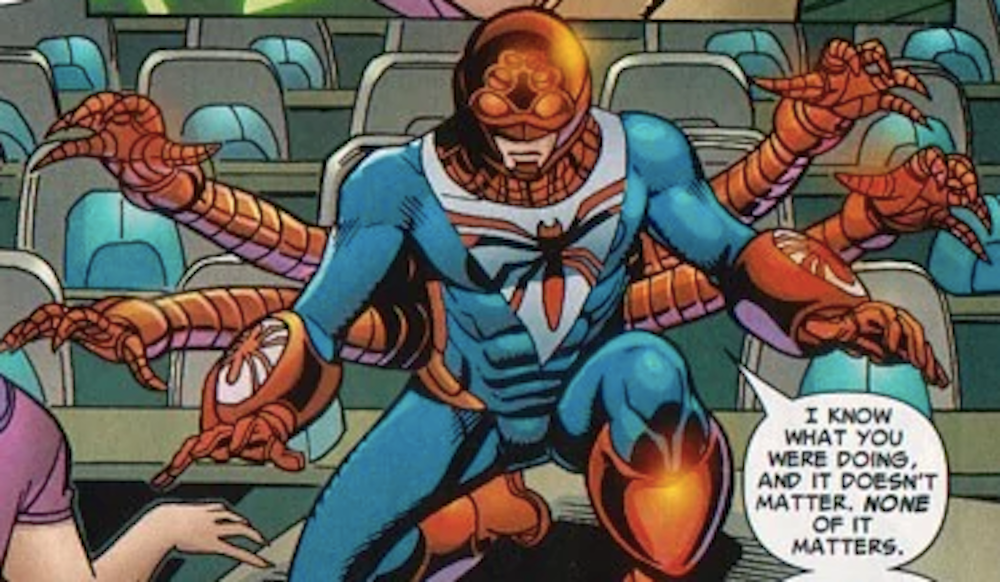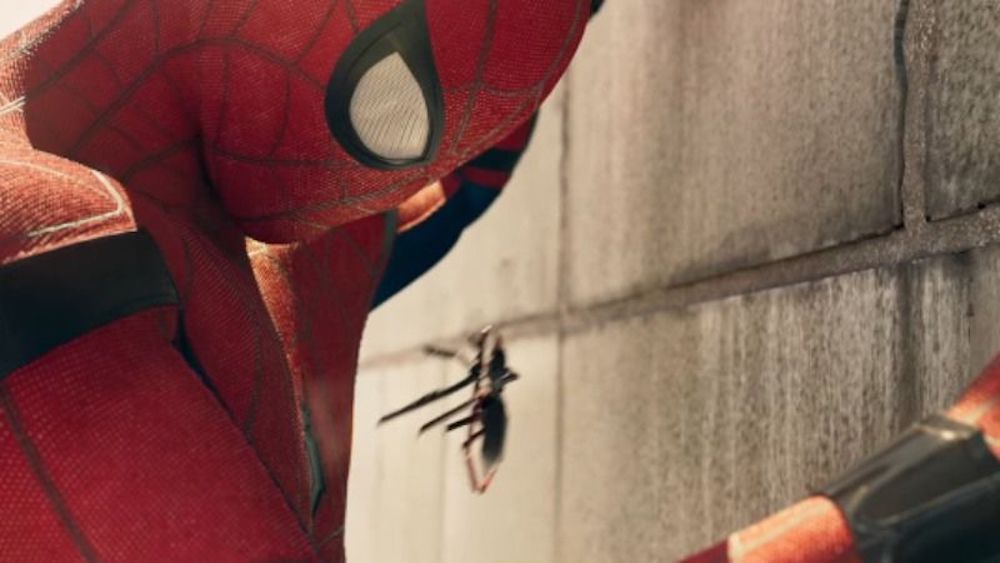Ah, the Spider-Man suit-- one of the most recognizable get-ups in comic books past and present. First introduced in August of 1962, Spider-Man has become one of the most recognizable, marketable, and profitable comic book characters in the world. After all, there have been six (seven if you count Captain America: Civil War) Spider-Man movies made since the year 2002.
A large part of Spider-Man's longevity -- other than his unique powers and perfectly crafted origin story -- is his costume.
The blue and red color scheme, the black webbing, the bulging eyes -- they all come together to create one of the most recognizable costumes in the comic book industry. However, over the years, what started as a simple means to protect Peter Parker's identity has evolved into much more, as the Spider-Man suit has had more gadgets and abilities over the years than even the rabid fan realizes.
So, while the old tune might say "Spider-Man, Spider-Man, does whatever a spider can," it really couldn't be further from the truth, because at one point or another, Spider-Man has been able to do anything any superhero can, and it's all because of his suit.
So, from invisibility to camouflage and being bulletproof to fireproof, here are the 15 Things You Didn't Know The Spider-Man Suit Could Do.
Become Bulletproof
While Spider-Man may not have super strength, that does not mean he has super skin, making him just as susceptible to bullets as the rest of us. Just like the rest of us, Spider-Man dealt with his bullet vulnerability the one way he could: with a bulletproof vest.
In the comic books, when the New Enforcers attacked New York using high-caliber firearms, Peter Parker was forced to create an armored spider-suit. Made out of a pseudo-metallic compound developed at Empire State University, the suit slowed Spider-Man down but defended him from the firearms.
During battle, the original MK I suit was destroyed by acid, but was eventually remade, as new models for the suit -- MK II, MK III, and MK IV armor -- have been introduced since.
Blend Into Shadows
During a run of The Amazing Spider-Man in the late 1990s, Norman Osborn (The Green Goblin) and The Trapster framed Spider-Man for murder, forcing Peter Parker to create four separate secret identities to clear his name -- Ricochet, Hornet, Dusk, and Prodigy.
Adapted from a suit Spider-Man had acquired in the Negative Zone from Dusk, the leader of a group of rebels battling Blastaar, not only did Dusk's suit allow Spider-Man to hide in the darkness, but the suit also gave Spidey the ability to fly.
After Spider-Man wore the costume in the Negative Zone and led the rebels to victory, he was allowed to take the suit home with him. While one of Spider-Man's more unknown costumes, Dusk's suit is certainly one of the most interesting.
Use Biological Sensors
Probably the most famous of the non-traditional Spider-Man looks is the Iron Spider suit, made iconic during the legendary Civil War run in the Marvel comics.
Given to Peter Parker by Tony Stark, the Iron Spider suit (one of the best looking suits Spider-Man has ever worn, by the way) has all of the tech and gadgets that one would come to expect from a Stark Industries product -- radio transmission scanners and receivers, multiple vision settings, deflection of small caliber firearms, enhanced strength and limited gliding capabilities, and multiple biological sensors.
The biological sensors in the Iron Spider suit, which can also read other people's vitals, gave Spider-Man the ability to read vital signs such as EKG readings and pulse rates.
If the end of Spider-Man: Homecoming was any indication, it looks as though we'll be getting the Iron Spider suit sooner rather than later.
Use Retractable Pseudo Arms
Another Iron Spider special, the retractable pseudo arms are a Tony Stark-tech-spin on a spider if there ever was one.
Also known as "waldoes," the Iron Spider suit possessed three mechanical spider-arms forged from mono-atomic iron alloy crystal. Equipped with multiple gadgets, the waldoes could be used to see around corners via cameras and can rapidly grow at a rate of 90 inches per second. The waldoes even have small grippers at the tips that Peter was able to use as pseudo fingers.
While not ideal for fighting and battle, the retractable pseudo arms on the Iron Spider armor were not only useful given it's multiple tools, but just plain look awesome. Whether or not the pseudo arms make it into the Marvel Cinematic Universe is unclear at this point, as Homecoming only revealed the front of the suit.
Use Blades
A Spider-Man suit that ripping through an acid trip, a little-known outfit called the "Fear Itself suit" was equipped with blades on each arm that Peter Parker was able to use as a melee weapon.
Peter Park acquired the Fear Itself suit during the Serpent's War, as many heroes were given armor made by Tony Stark and the Dwarves of Nidavellir to battle Cul Borson and his Worthy. Spider-Man, who was given one of these suits, was later destroyed by Tony Stark on Odin's orders.
While it is unknown what other features the suit had, it was made using Uru, making it extremely durable. While one of the more unrecognizable suits in Spider-Man lore, it's also one of the most underrated. The blue is electric and blades badass.
Become Invisible
Just because a superpower is completely and totally unrelated to being a spider (after all, these are comic books about a wall-crawling teenager we're talking about here), doesn't mean that Spider-Man hasn't had it at some point, and that includes invisibility.
Thanks to the Stealth Armor, a suit made by Peter Parker himself to combat and defend himself from the Hobgoblin's sonic screams, the suit warps light and sound around it, making it invisible.
Later in the comics, the Stealth Suit was used by Kaine to defeat Spider-Queen, although the costume was given a new color. Originally, Kaine was not able to make the suit change colors, but once he concentrated hard enough, he was able to change it back to its original colors.
Self-Repair
During a run of Fantastic Four in 2011, Spider-Man joins the Fantastic Four following the death of Johnny Storm, the Human Torch.
Upon joining the Fantastic Four, Spider-Man was given a new suit so he'd be able to fit in with the squad. Similar to the super suit's of Reed Richards, Sue Storm, Ben Grimm, and Johnny Storm before him, Spider-Man's new Future Foundation suit was made from Unstable Molecules, giving it the ability to repair itself, never get dirty, and change its appearance.
Spider-Man's was a little different, though, as the third generation of unstable molecules was able to let Spider-Man change his suit coloring and markings, allowing him to switch between his Future Foundation outfit and his classic blue and red costume at will.
Change Color
Although Spider-Man has one of the most iconic looks in all of comic books and popular culture, it doesn't mean he hasn't deviated from his traditional red and blue suit. It also doesn't mean he's the only one to ever put on the suit, either.
In a comic book series called Spider-Man 2099 that was introduced back in 1992, not only is the Spider-Man suit different, but it's a completely different man wearing the mask entirely.
Miguel O'Hara, Spider-Man of the year 2099, wore a similar costume to the original Spider-Man's, but with a more skull-like spider and more blue throughout the design.
Similar to the outfits worn by the Fantastic Four, this costume was made of Unstable Molecule Fabric, giving it the ability to repair itself, never get dirty, and change its appearance.
Become Sonic-Proof
For whatever reason, Spider-Man seems to be fending off sonic attacks more so than the average superhero, and because of that, he's required to wear sonic-proof suits.
One of those suits was the Spider-Armor MK IV, which came with all sorts of kick-ass abilities, including being sonic-proof.
Created using his resources at Parker Industries once it became a worldwide technology corporation, Peter Parker made the Spider-Armor MK IV, a suit so amazing that Peter Park said Tony Stark himself would "wet himself" if he knew what kind of heat the Spider-Armor MK IV was packing.
During his run as the Amazing Spider-Man, the sonic proof Spider-Amor MK IV is, by a mile, one of the most advanced super suits that Peter Parker has ever worn.
Use Mentally Generated Webbing
Ah, yes, the Ultimate Symbiote Suit. Created in collaboration between Eddie Brock Sr. and Richard Parker, the Symbiote Suit was an attempt to develop a revolutionary means to heal humanity of disease and illness. Brock and Parker were aiming to create a symbiotic suit that would encase and augment the wearer's body but ended up creating the Venom symbiote we now know today.
Spider-Man has been affected by the Venom symbiote many times during his run, gifting him with occasional powers he wouldn't have with his regular suit, such as the ability to mentally generate webbing.
While the symbiote suit both made Spider-Man more powerful, as well as give him awesome abilities such as mentally generated webbing, Peter ultimately decided that the symbiote suit was too violent.
Use Spider-Arms
Of all the entries on this list, Spider-Man and his Spider-Arms are the most complicated. In Amazing Spider-Man #700, during Doctor Octopus's final days, he switched bodies with Peter Parker during the final battle with between the two.
While Parker supposedly dying in Octavius' body, he showed Otto his experiences and memories as Spider-Man, causing Octavius to vow to become a better, "superior" Spider-Man. Following this, Octavius assumed the identities of both Peter Parker and Spider-Man while also making himself a new suit.
Otto's Spider-Man suit was loaded with tech and gadgets such as retractable claws on the gloves, a carbonadium to prevent mind control, a built-in communications device to activate nano-spider-tracers, and finally, "spider-arms" on the back of the suit as a shout out to his previous identity as Doc Oc.
Become Fire-proof
Another perk of the Spider-Man MK-IV suit was its ability to be fire-proof. Including many functions and upgrades that took inspiration from Spider-Man's previous costumes, the Spider-Armor Mark IV is by far Peter's most technologically advanced and powerful costume, loaded with upgrades and abilities that he's never had before.
Made of a light-weight metallic liquid nanotechnology that can respond to both Spider-Man's mental and vocal commands, the MK IV armor also provided Spider-Man with protection without slowing him down.
In fact, the suit is so fire-proof that it can not only withstand regular fire, but can also defend against the durability against the heat from the Human Torch's flames.
Given that things tend to catch on fire whenever superheroes and supervillains are around, a fire-proof suit seems logical.
Camouflage
When you look at the Spider-Man suit -- with its bright blue and red and eye-popping web design-- the word "camouflage" doesn't necessarily come to mind. However, Peter Parker has always been full of surprises, so it should come as no shock he's been able to figure out a way to become camouflaged.
While the symbiote suit is a largely evil, malevolent, terrible, no-good creation, even the biggest of Spider-Man purists will admit that not only does it look awesome, but it's got some pretty sweet powers that Spider-Man would find useful on a daily basis-- one of which is the ability to camouflage.
The symbiote suit gives Peter the ability to change into whatever clothing he could think of, making changing from his street clothes to the black suit a breeze. It also helped him escape notice a few times, replicating a police uniform so he could slip through a dragnet in the '90s animated series.
Use Doc Oc-like Mechanical Arms
Just because Spider-Man has one of the most iconic costumes and looks in all of comic books and popular culture, does not mean he hasn't deviated from his traditional red and blue suit, and it also doesn't mean he's the only one to ever put on the suit.
In the year 2211, the Spider-Man of that time is named Max Borne. Borne's costume had a different color scheme and no webbing marks, although it maintained the same patterns. His mask was a mechanical helmet and the suit also came equipped with four red mechanical arms similar to Doctor Octopus' mechanical arms.
Needless to say -- Peter Park or not -- the 2211 and its mechanical arms was definitely not one of Spider-Man's best looks.
Control A Drone
One of the most interesting Spider-Suit abilities to come out of the Marvel Cinematic Universe is Droney.
In Spider-Man: Homecoming, Peter Parker receives his second Marvel Cinematic Suit (following the first one get got in Captain America: Civil War), only this suit is chalk full of upgrades Peter's Spider-Man: Homecoming suit was loaded with all sorts of gadgets such as Spider Vision, web wings, web shooter upgrades, GPS tracking, and finally, Droney.
Like most superheroes, Spidey has a logo on his chest, except thanks to Tony Stark, his Spider-Man emblem is actually a drone that can detach from the suit, acting like a drone similar to Falcon's Red Wing.
Used during the intense Washington Monument scene, Spider-Man puts Droney to use during his first major outing in his new suit.
---
Can you think of any other awesome Spider-Man suit abilities or powers that we forgot to mention? Sound off in the comments!

